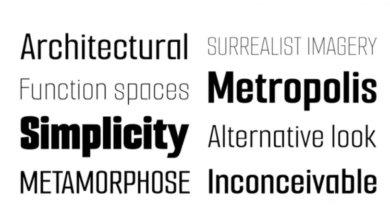How Website Design Impacts SEO Performance and User Engagement

A well-designed website does more than look good; it directly affects how search engines index your pages and how visitors interact with your brand. Both technical design and visual layout play a vital role in determining SEO rankings and user behavior. When thoughtfully implemented, website design in Cumming can enhance user trust, increase time on site, and improve search engine visibility, all of which lead to stronger digital performance.
Why Website Structure Matters for SEO
Search engines rely on a clear structure to crawl and index your website efficiently. A site that uses clean code, proper heading hierarchy, and logical navigation makes it easier for bots to understand and rank content. At the same time, well-structured URLs, internal linking, and mobile responsiveness allow users to move through the site without friction.
Design elements like responsive menus, breadcrumb trails, and easily accessible contact forms not only improve navigation but also reduce bounce rates, a key metric in SEO performance. A well-structured site keeps both users and search engines engaged.
First Impressions and User Experience
When visitors land on your site, they decide within seconds whether to stay or leave. Clean visuals, intuitive layouts, and fast-loading pages encourage deeper exploration. On the other hand, poor font choices, cluttered visuals, or unbalanced color schemes can drive users away quickly. These signals matter. Search engines take user behavior into account. A design that invites clicks, scrolls, and engagement indicates that your content is useful and trustworthy. Incorporating professional imagery, legible typography, and mobile-optimized design enhances both usability and perceived authority.
Common Design Mistakes That Hurt SEO
While many businesses focus on keywords and content, they often overlook technical design issues that sabotage rankings. These include excessive pop-ups, uncompressed images, outdated plugins, or designs that don’t adapt to different devices. Even small problems in structure can slow down a website or confuse search crawlers.
It’s important to address these issues early. Understanding errors you’re making with your website design highlights common pitfalls that impact both user satisfaction and search visibility. Fixing these design missteps can lead to immediate improvements in engagement and ranking.
See also: A Complete Guide to Intrinsically Safe Radios and Communication Technology
Professional Design Supports SEO Strategy
While content and keywords form the foundation of SEO, design supports how that content is delivered and consumed. A professionally designed website ensures that technical elements such as schema markup, structured data, and mobile responsiveness are integrated from the start.
It also allows for seamless content expansion as your SEO strategy evolves. Whether you’re adding blog posts, service pages, or media galleries, your site should be built to support growth without sacrificing speed or functionality. Understanding why it’s important to hire a professional website designer reveals that design goes far beyond visuals; it’s about creating an environment where SEO efforts can thrive. A cohesive site structure and intuitive user experience ensure every visitor journey supports your overall goals
Conclusion
Website design is not just an aesthetic choice; it’s a strategic tool that influences how search engines rank your site and how users interact with your brand. A well-optimized design creates smoother user journeys, reduces bounce rates, and strengthens content visibility across search platforms. By combining smart design with SEO best practices, businesses can deliver both strong performance and a memorable digital experience.





